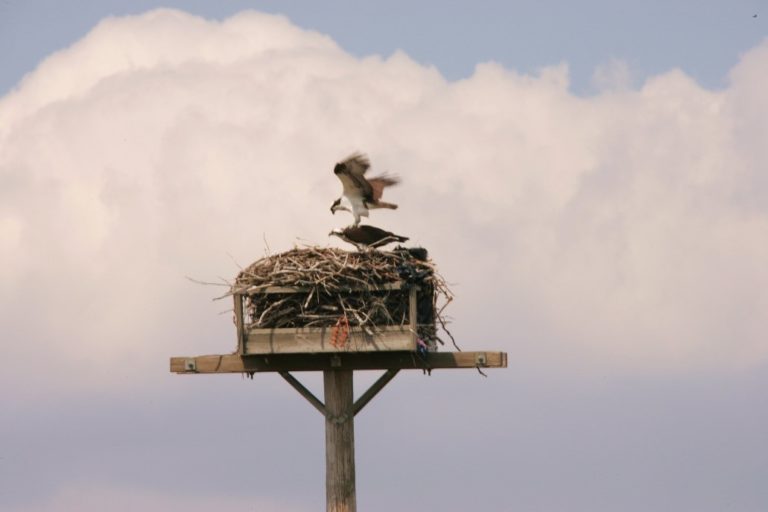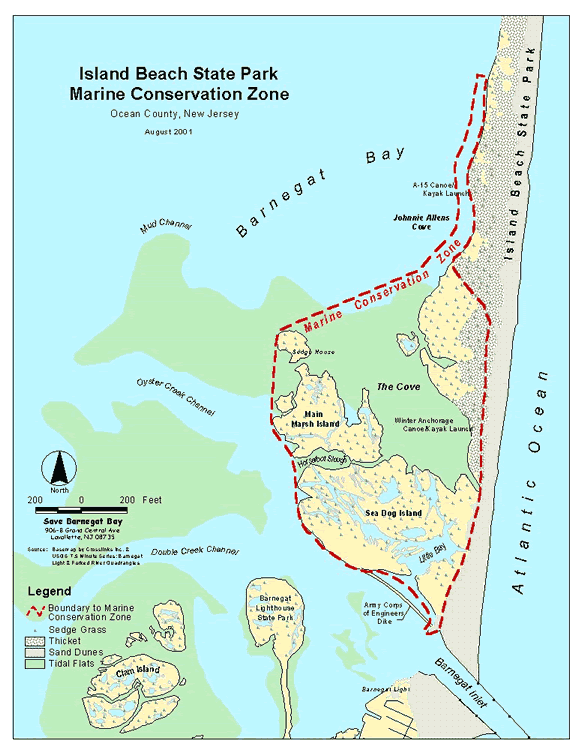August 18, 2020
DEP : It’s 2001, Marine Conservation Zone Promises Protection for Habitat and Wildlife
Pristine wetlands. Abundant wildlife. Island location.

Bet you’re thinking such a place only exists on Australia’s Great Barrier Reef or in the Florida Keys. But you’d be wrong.
There is such a place right here in New Jersey.
Deep in Ocean County’s Island Beach State Park is a section known as the Sedge Islands. It is the home of the Sedge Island Conservation Zone – acres and acres of tidal marshes, creeks, ponds and open water that make up a salt marsh ecosystem in which wildlife thrives, including New Jersey’s largest osprey colony.
Kayakers can paddle through the waters on a tour led by a state park naturalist. Visitors to the area also can fish, go clamming and crabbing, and go birding. And the Sedge Island Natural Resource Education Center offers environmental educational programs.
And now, a look at 2001 …
In 2001, the DEP established the state’s first Marine Conservation Zone around the Sedge Islands of Barnegat Bay, at the southern corner of Island Beach State Park.
“It’s no secret that there are competing uses for water space in Barnegat Bay and throughout our coastal waterways and inland lakes,” said then-DEP Commissioner Bob Shinn. “The idea of marine zoning offers a solution that would reduce watercraft conflicts in critical areas of the Sedge Islands, while not restricting watercraft activities in other areas of the bay.”

A key provision of the new zone would prohibit the use of high-speed personal watercraft and jet skis in the shallow waters of the Sedge Islands and within 300 feet of the Bayshore shoreline in the Southern Natural Area, while still allowing traditional boating, kayaking, fishing and clamming activities.
In a DEP press release, Bill Vibbert – then-superintendent of Island Beach State Park – cited the successful use of marine conservation zoning to protect sensitive marine habitats around the world, including Australia’s Great Barrier Reef, the Cayman Islands and the Marine Life Conservation Districts in Hawaii.
“Marine zoning also will be useful for the protection of nesting bird colonies, endangered species such as osprey and peregrine falcon, and preserving historic uses of Barnegat Bay because many threatened and endangered wildlife in the Sedge Islands depend on the estuary for survival,” Vibbert said.
Today, the Sedge Island Marine Conservation Zone protects approximately 1,900 acres of maritime forest, thicket and sensitive tidal marsh ecosystems, among the state’s most productive wildlife habitats. The Sedge Islands are also home to New Jersey’s largest osprey colony and its earliest peregrine falcon “hacking” tower.
###